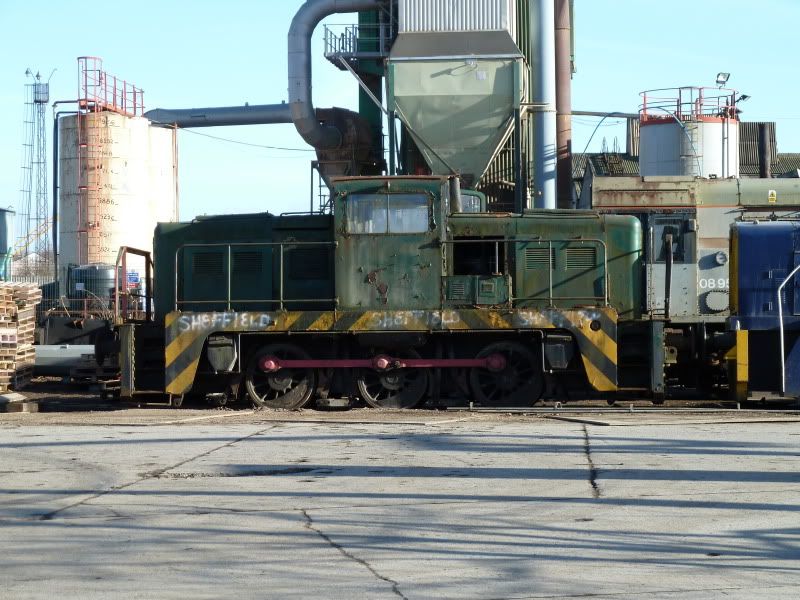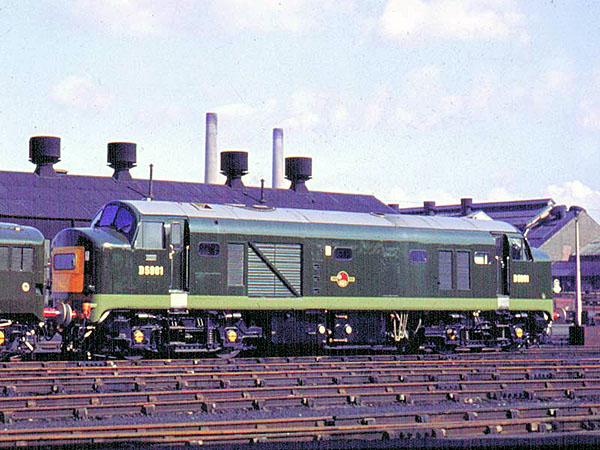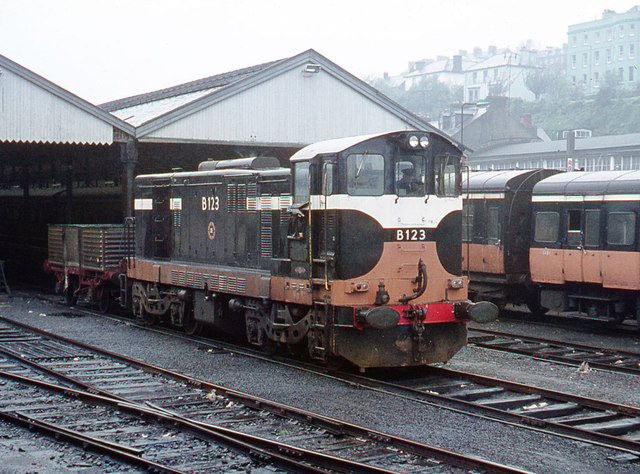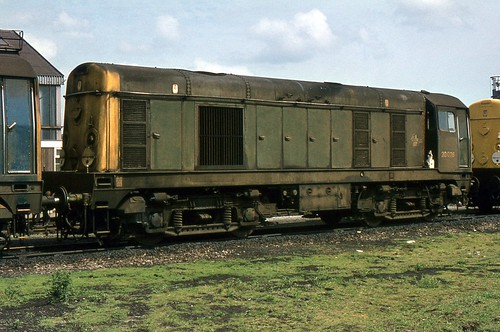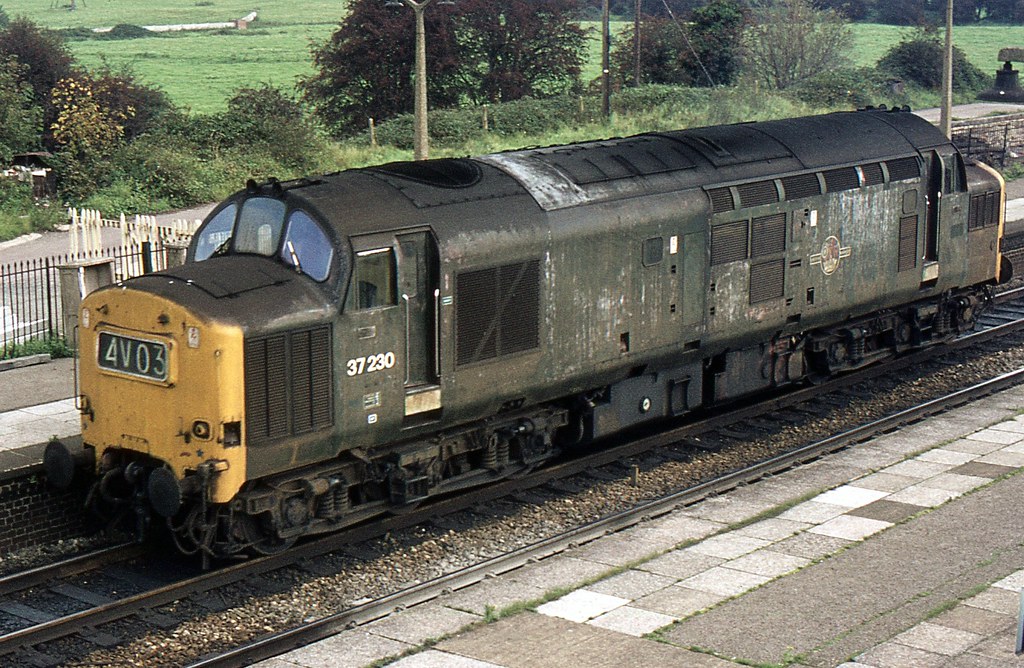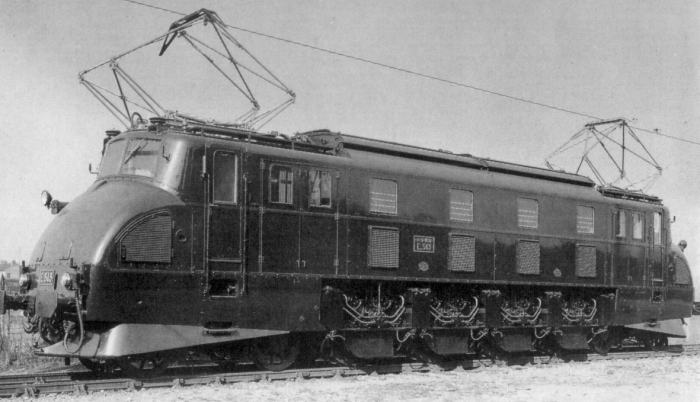Haywood - Updated Locomotive roster
Posted: Wed Nov 23, 2016 7:14 pm
I posted a thread regarding how the LNER might have developed had Nationalisation not occurred. I've taken on board the discussions that occurred as well as information I've obtained afterwards and incorporated it into a plan for a layout which, as far as I'm aware, will touch upon a concept that's never left the theoretical stage and the odd digitally altered post nationalization locomotive whilst being faithful to the spirit of the LNER.
the layout will be a OO scale 10x15 foot (est.) DCC mainline layout set on a fictional station on the ECML between Doncaster and Selby in the 50s and 60s that also serves as an interchange with a fictional former constituent that brings a variety of materials such as coal, stone and lumber to the interchange.
due to size constraints the mainline will be two tracks as opposed to four and the trains will be a maximum of 6 coaches and 15 wagons long.
I've set myself a few "historical" parameters so it's not a cluster**** of conflicting logics. A number of these are based on the development of other countries' railways like those of Australia, Ireland, mainland Europe and America.
in this reality the LNER wasn't quite so cash strapped.
the railways weren't so damaged during WW2.
At the time depicted on this layout, the ECML has been electrified between Doncaster and York to allow Woodhead coal trains to go nonstop to Doncaster or York.
headcode lamps are being phased out in favour of electric lights like those fitted to later LNER locomotives. allowing locomotives on the layout to display any headcode possible using LEDs.
Private Owner Wagon Companies have undergone a soft-nationalisation of sorts, with companies in a particular county, city or area being merged together and falling under the ownership of the relevant councils. Examples that will appear on the layout include Yorkshire Union Collieries, Humberside Iron and steel, Greater Lincolnshire Coal & Coke, East Riding (Coal), Yorkshire Dales United Dairy products, and Nottinghamshire Coal & Coke. Liveries are to be decided following further discussion.
diesel locomotives will be a mixture of ECML specific English types like the Deltic and Baby Deltic, and foreign power like the EMD-NoHAB and Irish outline GM-EMD types built under licence (the logic here being that GM-EMD would base their LNER locomotives off the locomotives already built for Ireland). these will all be modified in design to have four headcode lights like the Woodhead's EM series electric locomotives plus a few detail alterations.
All-new electric locomotives will be similar to some European rigid framed electric locomotives, with a 2-Bo-Bo-2 passenger locomotive based on Raven's EE1 2-Co-2 locomotive, and a 2-E-2 heavy freight locomotive similar in appearance to the ill-fated Fell-diesel planned, both using English electric body shells (DP1 for the 2-Co-2 and 37/40 for the 2-Do-2).
Wagons will undergo a transition from short wheelbase two-axle wagons to long wheelbase bogie wagons, maybe 30 or 40ft long, that still display the hallmarks of older British freight wagons similar to this 1939-built BRCW livestock van destined for Iraq. at the time depicted on the layout both types of wagon can be seen in abundance.
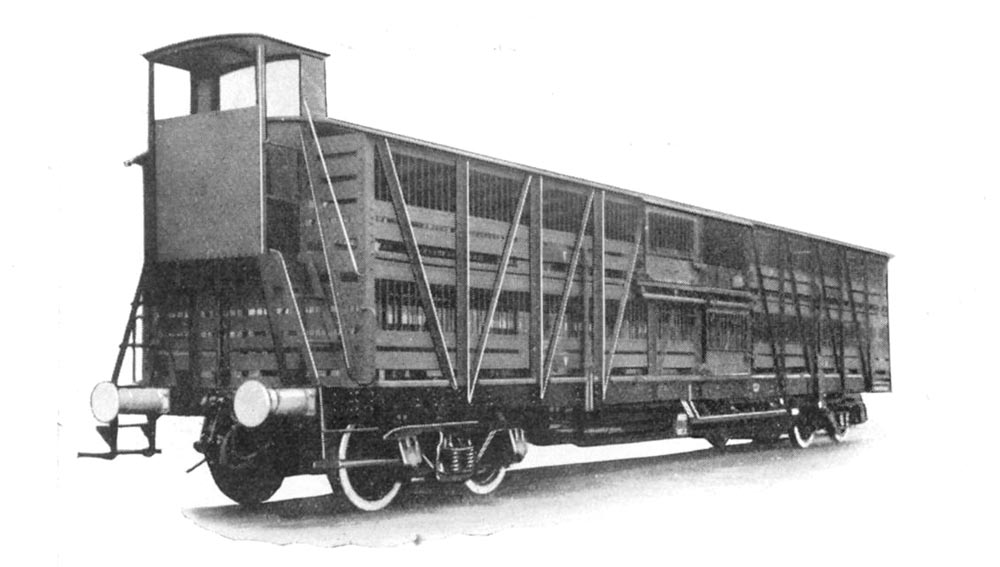
these wagons will be scratch built using ready made detail components.
As this layout is still in the planning stages some details may tend to develop, evolve or change over time. Additionally this will be my first time doing a proper layout and whilst I understand the theory behind a great deal of different techniques relating to railway modelling I've never really had the opportunity to put my skills to the test besides the odd kit which I have thoroughly enjoyed. so I ask those following the thread to keep an open mind, much like Edward Thompson this will be my first time testing out my own ideas, though hopefully unlike Thompson I won't become infamous for it
the layout will be a OO scale 10x15 foot (est.) DCC mainline layout set on a fictional station on the ECML between Doncaster and Selby in the 50s and 60s that also serves as an interchange with a fictional former constituent that brings a variety of materials such as coal, stone and lumber to the interchange.
due to size constraints the mainline will be two tracks as opposed to four and the trains will be a maximum of 6 coaches and 15 wagons long.
I've set myself a few "historical" parameters so it's not a cluster**** of conflicting logics. A number of these are based on the development of other countries' railways like those of Australia, Ireland, mainland Europe and America.
in this reality the LNER wasn't quite so cash strapped.
the railways weren't so damaged during WW2.
At the time depicted on this layout, the ECML has been electrified between Doncaster and York to allow Woodhead coal trains to go nonstop to Doncaster or York.
headcode lamps are being phased out in favour of electric lights like those fitted to later LNER locomotives. allowing locomotives on the layout to display any headcode possible using LEDs.
Private Owner Wagon Companies have undergone a soft-nationalisation of sorts, with companies in a particular county, city or area being merged together and falling under the ownership of the relevant councils. Examples that will appear on the layout include Yorkshire Union Collieries, Humberside Iron and steel, Greater Lincolnshire Coal & Coke, East Riding (Coal), Yorkshire Dales United Dairy products, and Nottinghamshire Coal & Coke. Liveries are to be decided following further discussion.
diesel locomotives will be a mixture of ECML specific English types like the Deltic and Baby Deltic, and foreign power like the EMD-NoHAB and Irish outline GM-EMD types built under licence (the logic here being that GM-EMD would base their LNER locomotives off the locomotives already built for Ireland). these will all be modified in design to have four headcode lights like the Woodhead's EM series electric locomotives plus a few detail alterations.
All-new electric locomotives will be similar to some European rigid framed electric locomotives, with a 2-Bo-Bo-2 passenger locomotive based on Raven's EE1 2-Co-2 locomotive, and a 2-E-2 heavy freight locomotive similar in appearance to the ill-fated Fell-diesel planned, both using English electric body shells (DP1 for the 2-Co-2 and 37/40 for the 2-Do-2).
Wagons will undergo a transition from short wheelbase two-axle wagons to long wheelbase bogie wagons, maybe 30 or 40ft long, that still display the hallmarks of older British freight wagons similar to this 1939-built BRCW livestock van destined for Iraq. at the time depicted on the layout both types of wagon can be seen in abundance.

these wagons will be scratch built using ready made detail components.
As this layout is still in the planning stages some details may tend to develop, evolve or change over time. Additionally this will be my first time doing a proper layout and whilst I understand the theory behind a great deal of different techniques relating to railway modelling I've never really had the opportunity to put my skills to the test besides the odd kit which I have thoroughly enjoyed. so I ask those following the thread to keep an open mind, much like Edward Thompson this will be my first time testing out my own ideas, though hopefully unlike Thompson I won't become infamous for it
